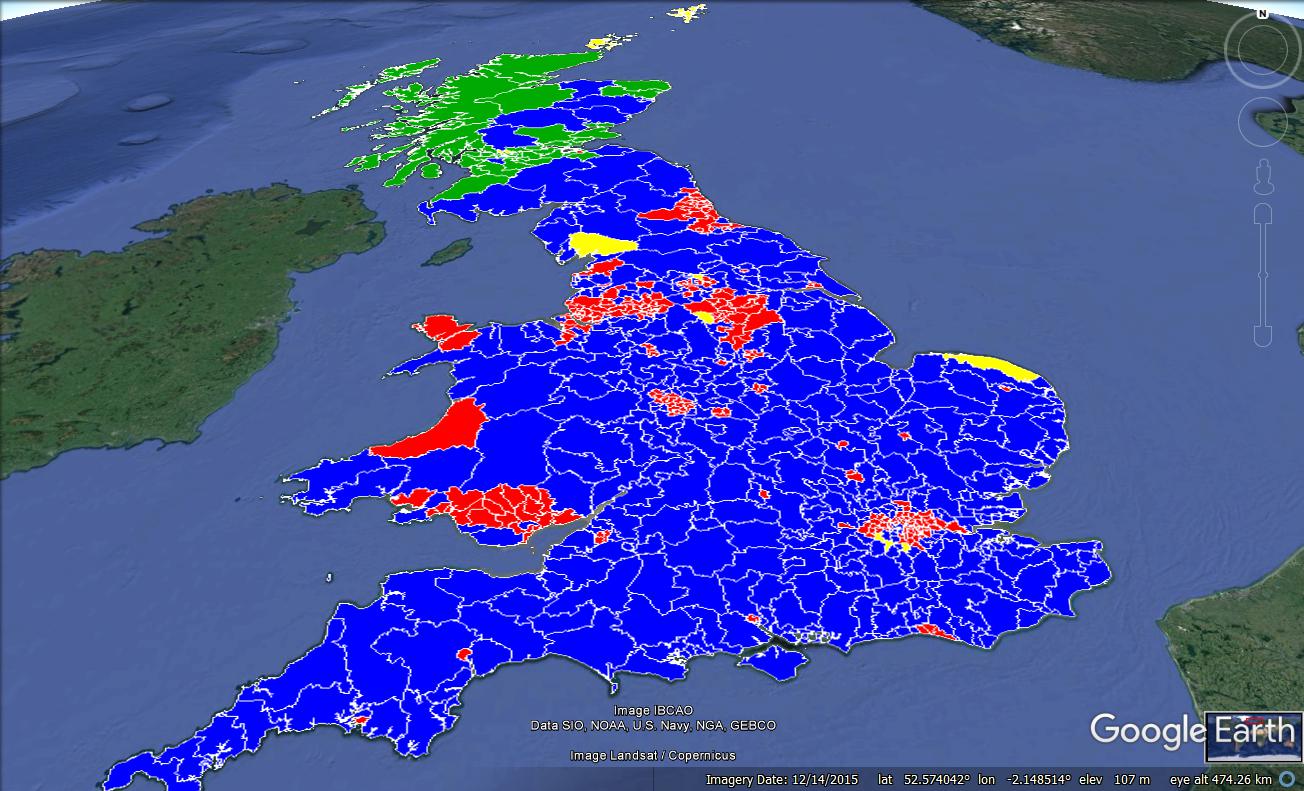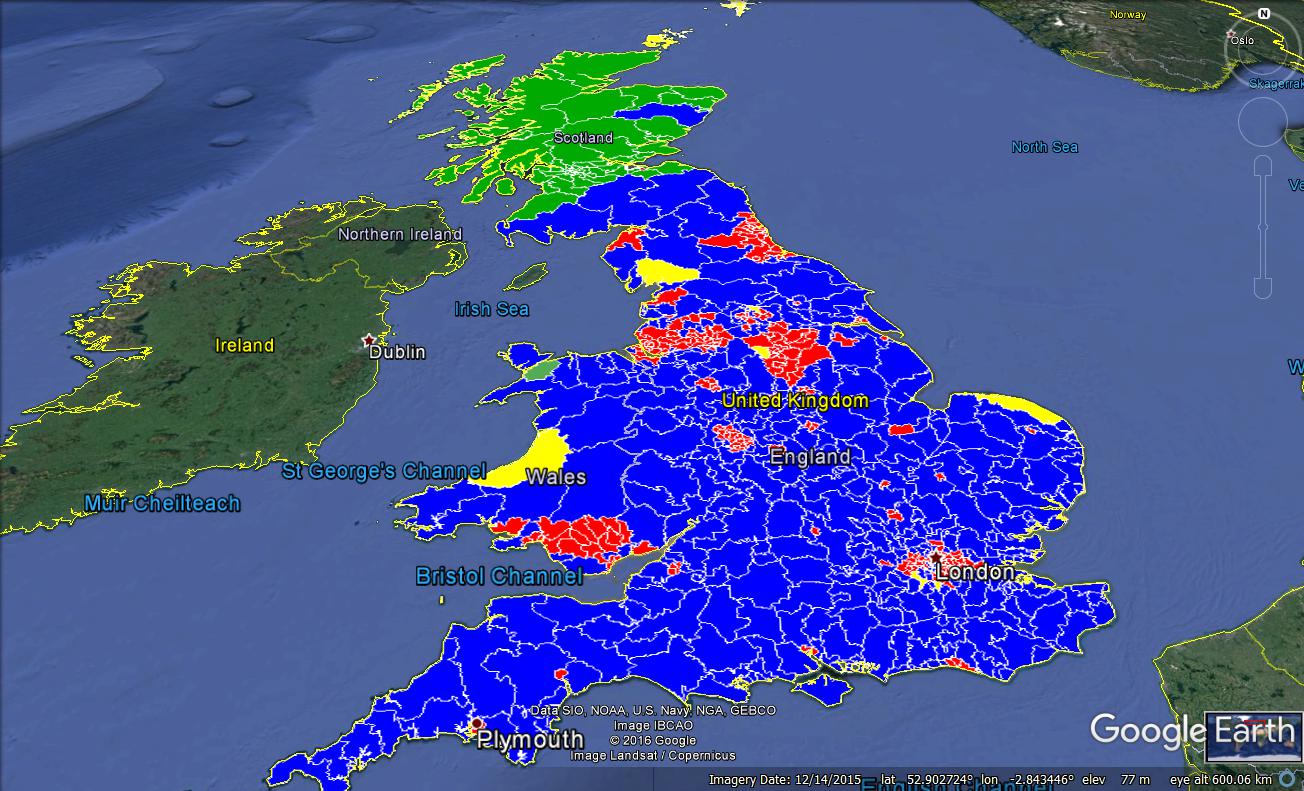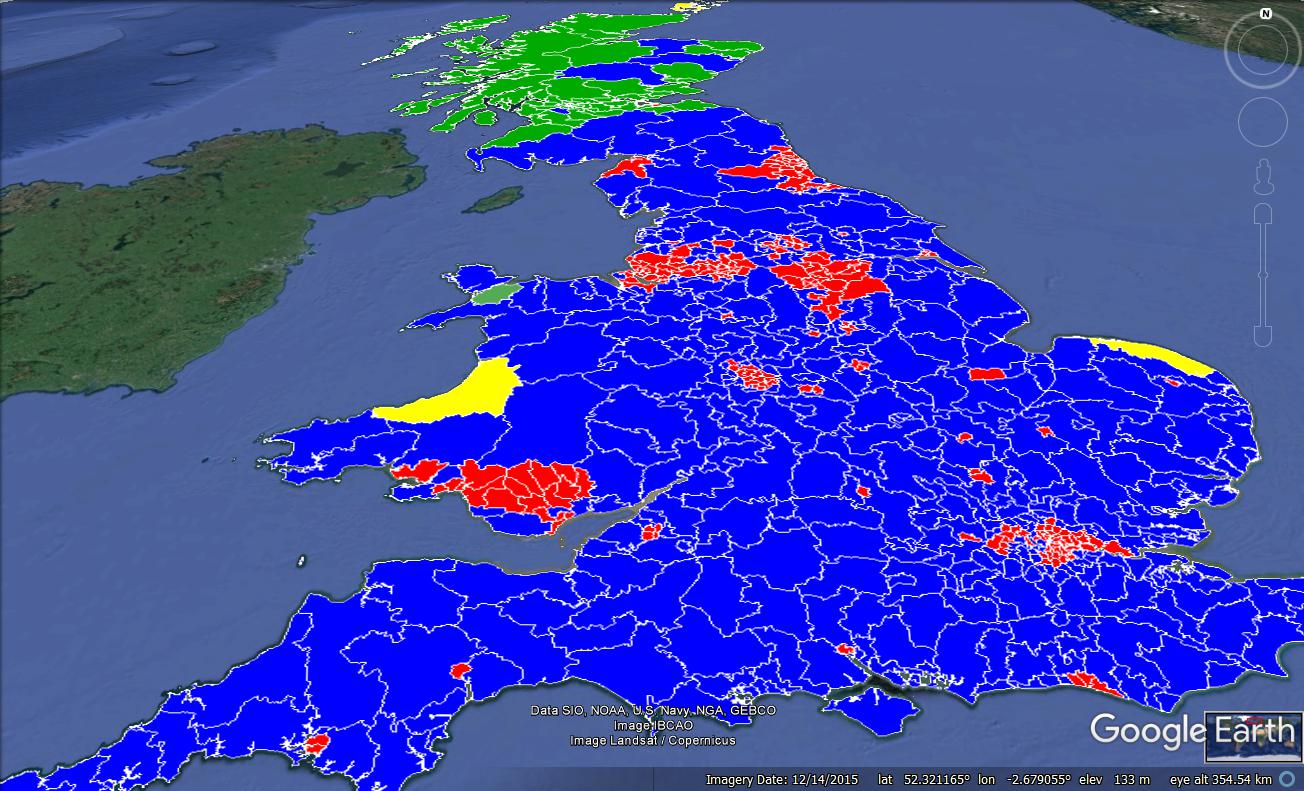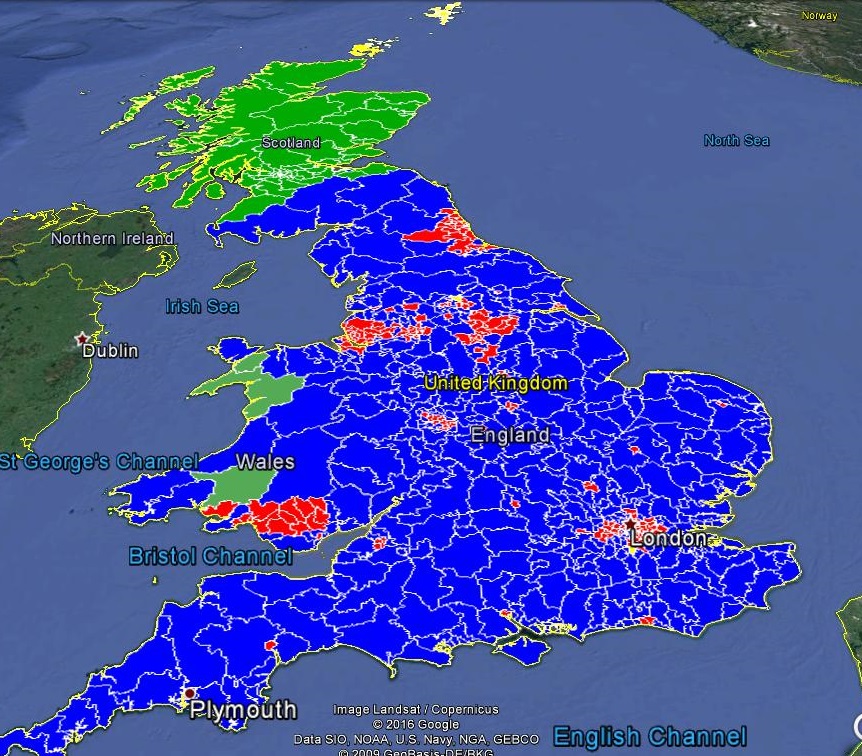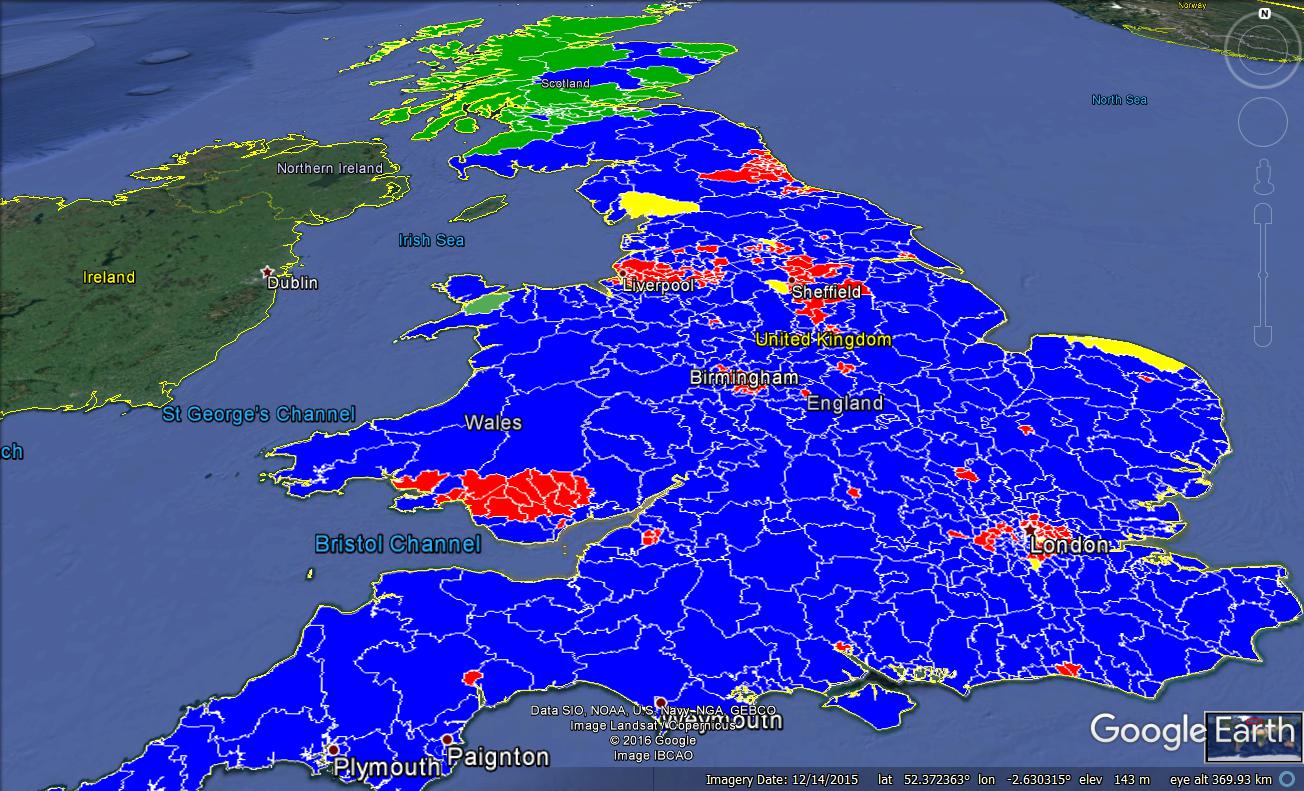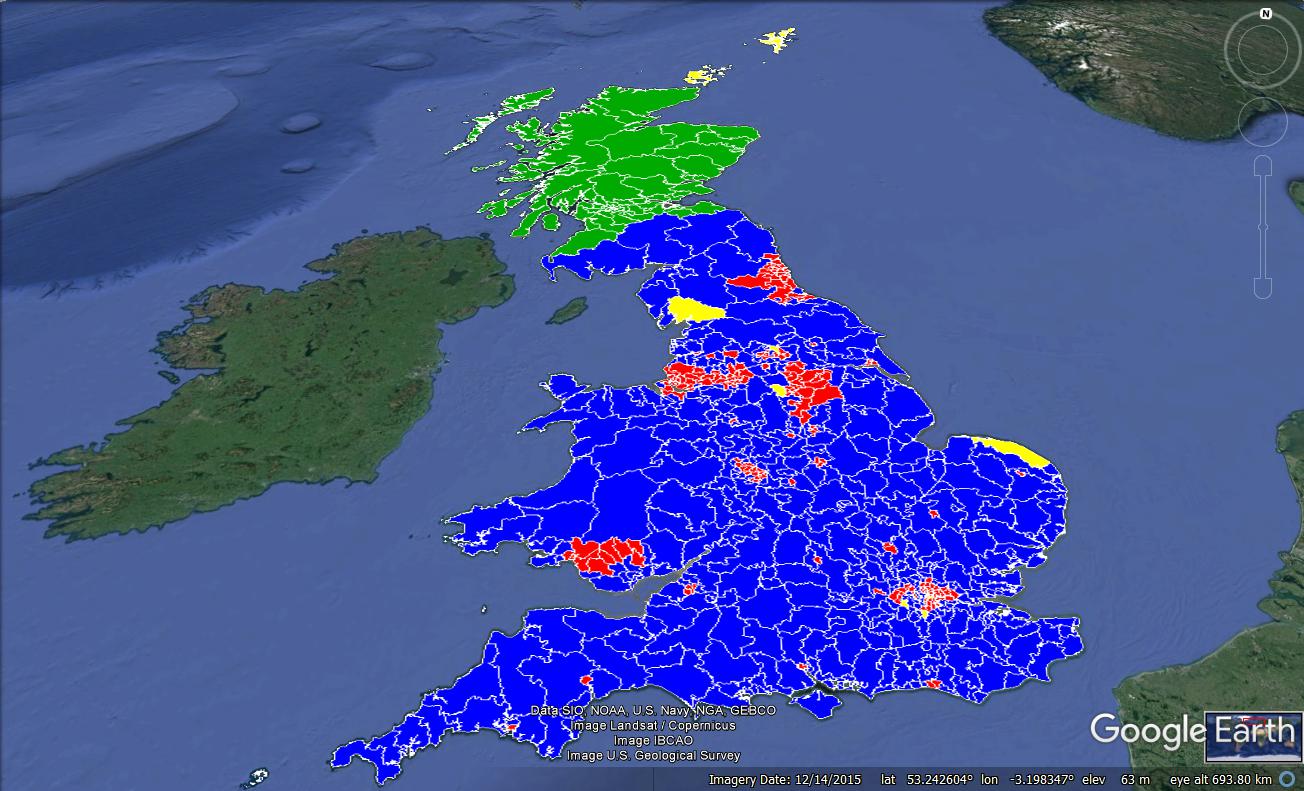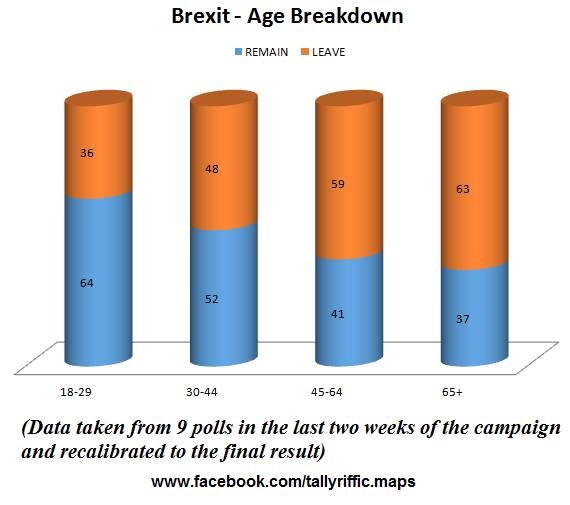The overall projection (and seat totals) for the parties in the polls ending between May 29th and June 1st in the UK General Election were as follows :
| CONSERVATIVES | 43% | 337 seats |
| LABOUR | 38% | 238 seats |
| LIBERAL DEMOCRATS | 7% | 2 seats |
| UNITED KINGDOM INDEPENDENCE PARTY | 5% | |
| SCOTTISH NATIONALIST PARTY | 4% | 50 seats |
| PLAID CYMRU | 1% | 5 seats |
| GREENS | 2% |
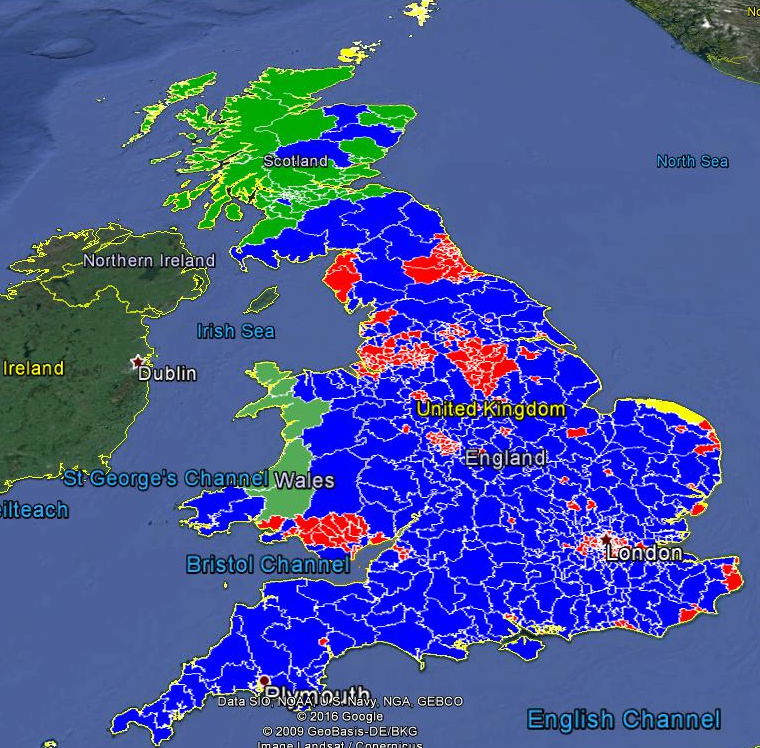
This poll now includes a Turnout Difference projection which relies on intention to vote data from Opinion Polls now and in 2015. Currently it seems that young (18-34) turnout will rise, while middle-age and older voter turnout will fall. The cumulative effect of these movements is a 1% drop in Conservative vote share against a 1% rise for Labour.
The Conservatives are up 5 points since 2015 and would gain just 7 seats. They would gain particularly amongst older voters (up 14% since 2015), working-class voters and voters in the North, Wales and Scotland. By contrast, their vote amongst younger voters has actually dropped significantly since 2015. Although they are still gaining strongly amongst working-class voters, Labour have now drawn level with them for the first time in the campaign. The Tories would win 131 of the 159 most middle-class constituencies, compared to just 9 of the 139 most working-class constituencies (down from 13 in 2015). They also win 182 of the 220 constituencies with the Oldest age profile (up from 176 in 2013), compared to 19 of the 122 constituencies with the youngest age profile. In fact in the 182 constituencies with the youngest age profile, they lose 5 seats compared to 2015, as against gaining 11 seats in the remaining (older) constituencies.
Labour have massively increased their younger vote (up 20% since 2015), but gains amongst middle-aged and particularly older voters have proved more modest. That said, Labour lead the Conservatives amongst middle-aged voters for the first time in the campaign. They started off the campaign behind The Tories practically everywhere but now lead them in London and the North and are tied with them in Wales – which is a big improvement on the near-complete wipeout there suggested by polls early in the campaign. They are more popular amongst women than with men. Labour would win just 25 of the 159 most middle-class constituencies, compared to 111 of the 139 most working-class constituencies. They win only 23 of the 220 constituencies with the oldest age profile (up from 22 in 2015), compared to 94 of the 122 constituencies with the youngest age profile (up from 87 in 2015). Labour have gained during the campaign particularly from Female voters – The Tories led them nearly 2 to 1 at the start of the campaign, but now Labour have now drawn level with them. Similarly they started the campaign nearly 20 points behind the Tories with working-class voters but are now tied with them.
The Socio-economic profile of Tory and Labour voters is actually quite similar – 37% of Tory voters are working-class, compared to 42% of Labour voters – but the gap does seem to be widening. The real difference is the age-profile – Over half of Tory supporters are over 55, comparely to just over a quarter of Labour supporters, while only one sixth of Tory voters are under 35, while these younger voters account for 40% of Labour voters,
The Liberal Democrats have fallen four points since the start of the campaign, and so are now below their 2015 figure. On this analysis, they would win only two seats, but this doesn’t take into account tactical voting which may yet salvage some seats that might otherwise fall. They fare markedly better amongst middle-class voters (nearly three-quarters of Liberal Democrat voters are middle-class), and the vast majority of Liberal Democrats are Remain voters, due partly to a small influx of Remain voters from other parties, but also because of an exodus of 2015 Liberal Democrat voters who voted LEAVE. There is a considerable flux in the Liberal Democrat voter base, with half of their 2015 voters leaving for either the Tories or Labour, being replaced by other voters coming from those parties. In fact their voter retention has fallen during the campaign – at the outset two-thirds of their previous voters were saying they would stick with the party. This could possibly be a positive sign inasmuch as that this churn it could represent the movements of voters intending to vote tactically.
UKIP entered the campaign with just over half their 2015 vote and now have less than a third of it. The majority of 2015 UKIP voters now say they are going to vote Conservative (though a small minority are now switching to Labour as well). They do best amongst working-class voters, and the vast majority of UKIPers are Leave voters.
The SNP would still retain a majority of the seats in Scotland, even though their vote is down significantly and the Conservatives look set to take several (mainly rural) seats.
The Conservatives been hitherto very successful in retaining their 2015 voters, with 9 out of 10 consistently saying they are sticking with them, but that is now down somewhat to about. In addition over half of 2015 UKIP voters and 1 in 5 2015 Liberal Democrat voters (and 1 in ten 2015 Labour voters) are now intending to vote for the Conservatives. Nearly one-third of 2015 Liberal Democrats are now planning to vote Labour, as indeed are a small but significant number of previous UKIP voters.
At the time of the Brexit Referendum The Tories were virtually tied with UKIP amongst Leave voters – they started this campaign 50 points ahead of them, and have maintained this lead reflecting polling showing that the bulk of 2015 UKIP voters are now intending to vote Conservative. By contrast, The Tories started the campaign again virtually tied with Labour amongst Remain Voters – but have now fallen significantly behind them amongst this cohort.
Download the Report : UK May 31 to June 1
